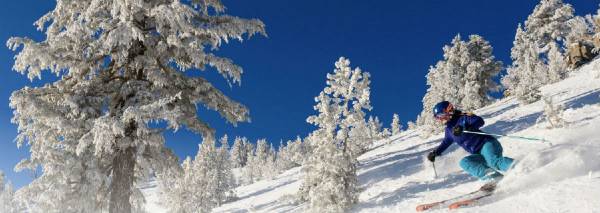Will multicultural skiers save the ski industry?

The ski industry needs multicultural segment participation: Specifically three key audiences: U.S. Hispanics, African Americans and Asian Americans.
U.S. Demographics are rapidly changing and diversity in sports may be the key to their survival. The ski industry is not known for being the most emblematic example of diversity in sports but also may be one to benefit the most from multicultural audiences. From an aging boomer generation which has been a core participant, to climate change which requires resorts to adapt there are numerous challenges confronting the industry.
According to the study from Snowsports Industries America (SIA) participation for the aforementioned three key multicultural audience segments, 2019-20 participation in winters ports by ethnicity showed Hispanics at 14% (+0.4%), a decrease of 0.5% for Blacks (9.2%) and for the Asian segment it remained flat at 7.7%.
Since the late 1970’s through today, skier numbers in the U.S. has remained relatively flat. With the aging baby boomer population which is a key part of that number, the challenge of how to replace those skiers is at the forefront. As populations change, especially in California and Colorado cities that feed many winter destinations, there are some efforts to reach out to different segments of the population. But is it enough? and will these populations be receptive?
Especially in mountain towns such as Lake Tahoe that have visitors from diverse backgrounds from states such as California and Nevada the difference between the diversity in town versus on the mountains is evident. In Lake Tahoe and in the drive markets there are very large Hispanic and Asian populations (among others).
Does the Ski Industry need multicultural skiers? And more importantly, do they realize it?
From an article in Aspen Sojourner. https://www.aspensojo.com/articles/2018/2/15/let-the-winter-games-begin related to the ski industry: Karl Kapuscinski, owner of Mountain High ski area, within a three-hour drive of Los Angeles, concurs. The Southern California demographic he sees now can deliver growth for destination ski resorts for years to come. He describes a new ethnic mix at Mountain High: about 60 percent from minority groups, especially Latino and Asian. These customers further reflect Southern California’s population in that they’re educated, have disposable income, and favor active, outdoor lifestyles. Kapuscinski also oversees Stevens Pass near Seattle, where he sees similar demographics.
While from experience, in the Lake Tahoe area the importance of Hispanic / Asian populations is evident. From the supermarket to the ski slopes, the influence of nearby multicultural audiences cannot be understated. Yet, what is way less evident is a consistent marketing effort to embrace the changing demographic.

Visit Denver offers multilingual options for multicultural audiences.
While Visit Denver has multiple language options as well as efforts to reach out to the Hispanic community, the ski industry seems to be well behind. A quick look at the two major ski companies offering the two largest season pass groupings of ski resorts. The Epic pass page is only in English and the IKON pass is in English & French. Even with resorts in Latin America, Japan and other countries having only French as the other language is just confusing.

French, really? Great language, but not sure the French population growth is at the same level as Hispanic and Asian Americans.
The ski industry faces numerous challenges, however there is a clear replacement to participation numbers in U.S. Hispanic, African American, and Asian American populations. Does the industry recognize this? While it does seem that there is an overall understanding among industry executives, actions are far less evident and that is what will need to change.
Additional Resources:
